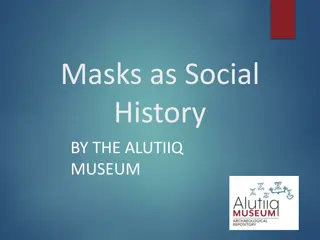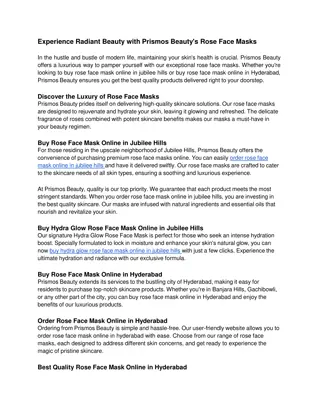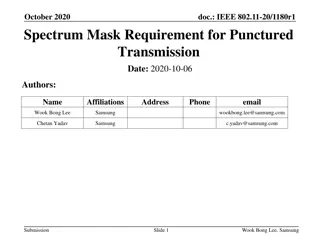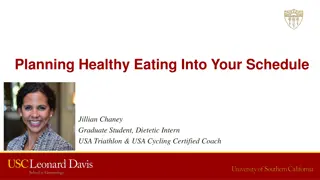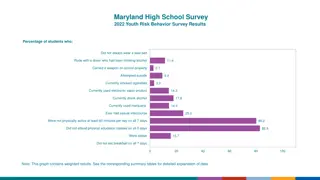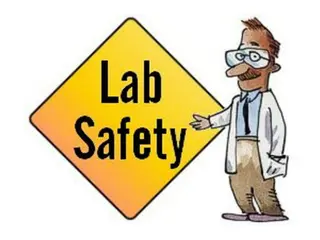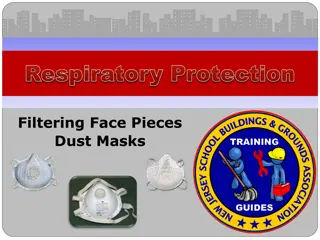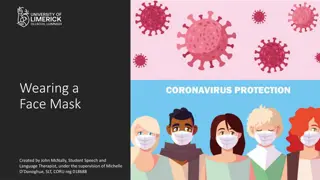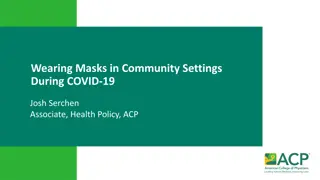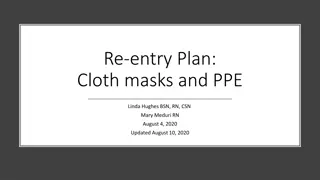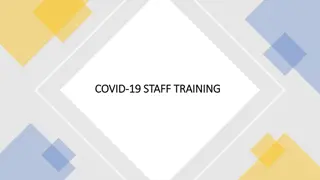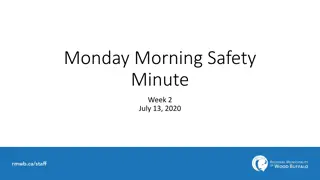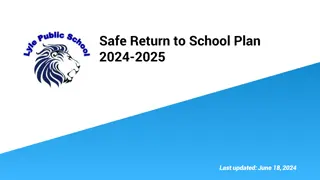Importance of Wearing Masks for a Healthy Environment
Consider wearing masks in public to prevent the spread of COVID-19, especially in situations where social distancing is challenging. GNETS focuses on teaching values and skills for a successful life, promotes a safe and healthy environment following CDC guidelines, and aims to encourage mask-wearing among students using effective strategies.
Download Presentation

Please find below an Image/Link to download the presentation.
The content on the website is provided AS IS for your information and personal use only. It may not be sold, licensed, or shared on other websites without obtaining consent from the author.If you encounter any issues during the download, it is possible that the publisher has removed the file from their server.
You are allowed to download the files provided on this website for personal or commercial use, subject to the condition that they are used lawfully. All files are the property of their respective owners.
The content on the website is provided AS IS for your information and personal use only. It may not be sold, licensed, or shared on other websites without obtaining consent from the author.
E N D
Presentation Transcript
Being Proactive: Wearing a Mask is Essential SAND HILLS GNETS CORNER PRESENTED BY: QUENSHAUNA MOTLEY SMITH, ED. D. GNETS LIAISON
GNETS Mission Statement Teach students the values and skills they need to live a successful life filled with a sense of belonging, a love for learning, and compassion for others.
GNETS Vision Statement Our Vision is to see students learn or rediscover skills that will help them to benefit from academic instruction in the least restrictive school environment available to them. Learning to use words to communicate ideas and feelings and discovering the value of being a group member enhances a student's ability to achieve. By working cooperatively with our students, their parents, local school personnel, and other community agencies our students will become lifelong learners and productive citizens.
Considerations for Wearing Masks Center for Disease Control (CDC) recommends that people wear masks in public settings and when around people who don t live in your household, especially when other social distancing measures are difficult to maintain. Masks may help prevent people who have COVID-19 from spreading the virus to others.
Considerations for Wearing Masks Masks are most likely to reduce the spread of COVID-19 when they are widely used by people in public settings. Masks should NOT be worn by children under the age of 2 or anyone who has trouble breathing, is unconscious, incapacitated, or otherwise unable to remove the mask without assistance.
Learning Intentions To continue to promote a safe and healthy environment for students as outlined with district and CDC policies and best practices. To encourage students to wear masks during the school day by implementing strategies that encourage the wearing of masks.
Effectiveness of Wearing Masks Masks are recommended as a simple barrier to help prevent respiratory droplets from traveling into the air and onto other people when the person wearing the mask coughs, sneezes, talks, or raises their voice. This is called source control.
When Selecting a Mask Keep In Mind .
STRATEGIES FOR STUDENTS WEARING MASKS TIP #1 Calming bag: Tangible items such as Band-Aids, mints, a personal note or encouraging sticker, extra pencils, etc. can often feel comforting when someone notices our fears or worries. Teachers can create a bag for each student if a grant or other funding is available Send home a list of items so that parents and guardians can create the bags.
STRATEGIES FOR STUDENTS WEARING MASKS TIP #2 New routines: be purposeful about creating classroom routines to ease any embarrassment, discomfort, worry, or anxiety students may have about wearing masks. Many of our students will not walk in already accustomed to wearing masks, so routines and predictable structures can help them feel calm and ready to learn. Routines can include things like drawing or journaling thoughts or other hands on activities.
STRATEGIES FOR STUDENTS WEARING MASKS TIP #3 Connections with parents: A letter to parents outlining class procedures and routines will ease their anxiety and that of their kids. Teachers can also use this letter to invite parents to share the celebrations and challenges their children have experienced over the past several months.
Suggested Questions to Ask Parents What are the two or three best ways I can create a positive experience for your child this year? Please share your favorite memories of your child. What makes him or her smile and laugh? What do you need from me that would be helpful for your family? What are ways I could help your child adjust to the mask this year?
STRATEGIES FOR STUDENTS WEARING MASKS TIP #4 Face masks and superhero powers: This is a new focused attention practice designed around masks. Ask students what superhero they are, ask them all to create a power pose. As they hold this pose, have them breathe in three deep breaths, hold for a couple of seconds, and then breathe out a superpower they wish to send to themselves, someone they care about, or the world.
STRATEGIES FOR STUDENTS WEARING MASKS TIP #5 Morning meeting questions: These are some questions teachers can use so that students can get use to wearing their masks. How does a mask protect us? Do you know of any superheroes that wear masks? Maybe we could all decorate our own paper masks? What colors, shapes, and designs do you want on your mask?
STRATEGIES FOR STUDENTS WEARING MASKS TIP #6 Emotion reading practice: We are capable of reading facial expressions from the eyes up. Teachers can spend a few minutes a day practicing this. Have a student wearing a mask think of a feeling and try to express that with their face, ask the class to guess the emotion or feeling. Another option is to put little masks on the emojis on feeling charts. Students can work to become experts at reading facial expressions of people wearing masks, which could be a fun ritual that reduces anxiety and fear.
References https://www.edutopia.org/article/how-help-students-get-used-masks https://www.cdc.gov/coronavirus/2019-ncov/prevent-getting-sick/cloth- face-cover-guidance.html https://www.rcboe.org/sandhills
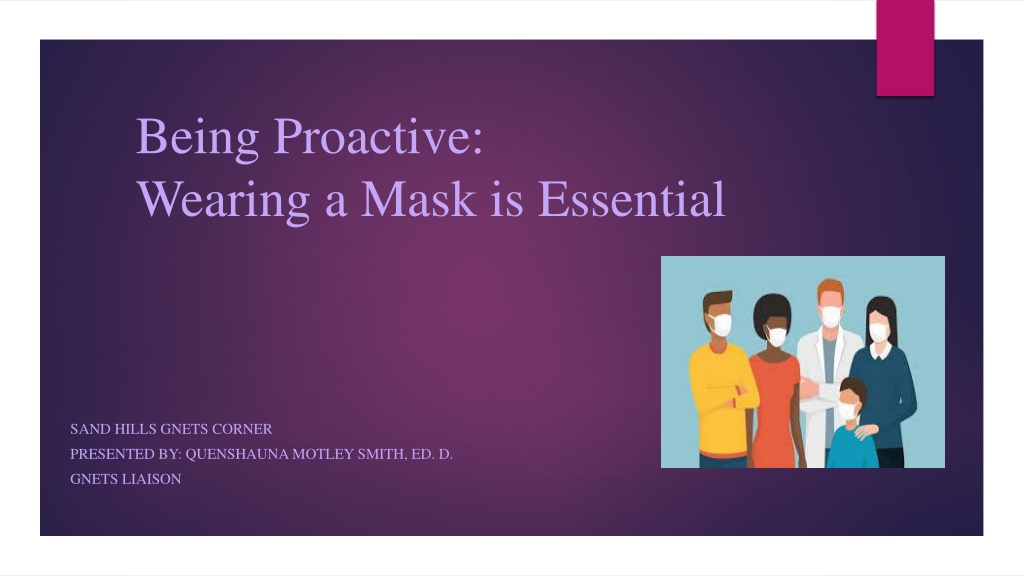
 undefined
undefined








